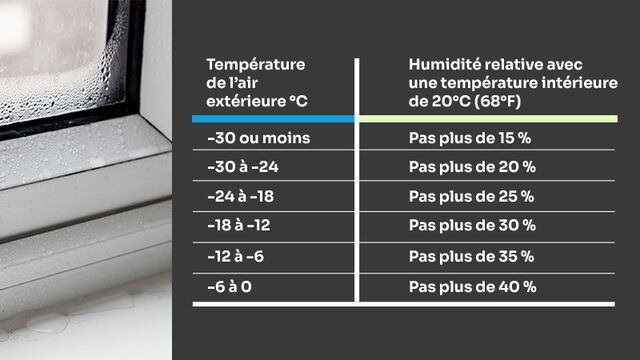Window Condensation - Tips and Practical Solutions
As winter approaches, condensation on windows often becomes a concern. Water droplets that form on the glass can not only obstruct the view but also negatively impact the durability of the windows and the quality of indoor air. As a specialist in doors and windows, Fenêtres Concept offers a few tips to help you manage condensation effectively.
What is condensation?
Before seeking solutions, it’s essential to understand the causes of condensation. It occurs when the temperature difference between the inside and outside of the house meets indoor humidity. When warm, humid air inside comes into contact with colder surfaces like window panes, the rapid cooling causes the moisture to condense into visible water droplets on the glass. This process can lead to a build-up of moisture around the edges of windows, potentially posing challenges to the durability of the materials.
What are the consequences of condensation?
Excessive condensation creates an environment conducive to mold growth, which can lead to health issues and cause premature material degradation, shortening their lifespan and resulting in costly maintenance or replacement.
Condensation can also block natural sunlight from entering your home. Natural light is crucial not only for comfort but also for maintaining an energy-efficient indoor environment by providing warmth and light.
Why do windows have condensation?
Several factors can contribute to window condensation. A poorly insulated house, susceptible to temperature fluctuations between inside and outside, is a primary cause. High indoor humidity levels and inadequate ventilation are also key contributors. The choice of materials for window frames and the frequency of window pane maintenance are important factors to consider, as some materials are more prone to condensation than others.
How to prevent condensation on windows?
If your windows have condensation, there are several effective measures you can take.
- Clean glass surfaces frequently to eliminate water droplet build-up.
- Remove screens in autumn and keep windows closed during cold spells.
- Opt for windows that can be recycled or exchanged under warranty, ideally with an advanced locking system.
- Examine the condition of the sealant around the windows. Defective sealant can allow cold air to penetrate more easily. Replacing defective sealant with a quality product can help improve the efficiency of window insulation.
- Control indoor humidity. The use of a dehumidifier helps maintain optimum humidity levels in the home. Proper ventilation of the kitchen and bathroom will also contribute to better condensation control.

- Install new windows and a new front door to limit the circulation of humid air outside.
If you have any questions about window and door maintenance, reach out to Fenêtres Concept, your trusted specialists in window and door installation. With us, personalized advice and service are always guaranteed! Do you have a renovation project in mind and want to bring your ideas to life? Contact us for a quote.
